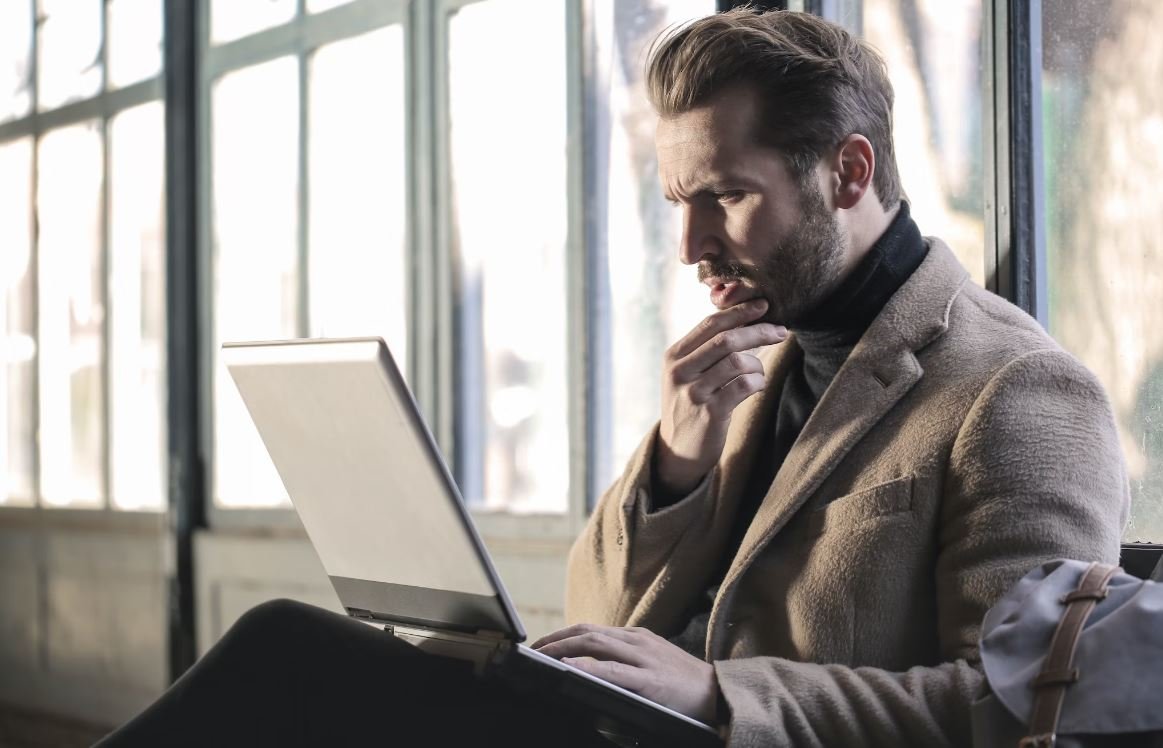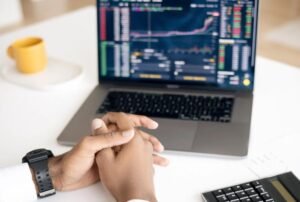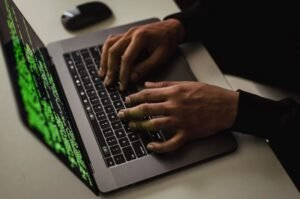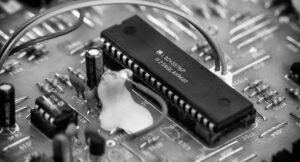AI Art vs Original
Introduction
Artificial Intelligence (AI) has made significant advancements in various fields, and one area where it is gaining attention is in the creation of art. AI-generated art is becoming more sophisticated, raising questions about its value and impact on traditional art forms. In this article, we will explore the nuances of AI art and its comparison to original artistic creations.
Key Takeaways:
- AI art is created using algorithms and machine learning techniques.
- Original art is the product of human creativity and expression.
- AI art challenges the definition and uniqueness of traditional art.
- Human emotions and experiences play a vital role in original art.
- AI art raises ethical concerns regarding authorship and creativity.
AI Art: A Product of Algorithms and Machine Learning
AI-generated art relies on complex algorithms and machine learning techniques to create images, music, and even poetry. These algorithms are trained on vast datasets consisting of existing art pieces. The AI then analyzes patterns, styles, and techniques to create new works.
AI systems can adapt and improve their creative output over time, continuously evolving their artistic skills. However, it is essential to note that AI artists do not possess an inherent subjective experience, which plays a significant role in the creation of original art.
Artificial vs Human Creativity: The Uniqueness Factor
Original art is distinguished by its uniqueness. Each piece has a personal touch that reflects the artist’s emotions, experiences, and individual style. On the other hand, AI art may lack this uniqueness. While AI can replicate existing styles and techniques flawlessly, it often struggles to deliver the same depth of emotion and personal expression.
Original art captures the essence of the artist’s perception of the world, creating a unique connection between the artwork and its audience.
Evaluating Artistic Value: Subjectivity and Interpretation
Assessing the artistic value of AI art poses a challenge due to its subjectivity. Traditional art often evokes emotional responses and sparks meaningful interpretations from viewers. AI art, despite its intricate patterns and technical precision, may not elicit the same depth of emotional connection for its audience.
The interpretation of a piece of art remains a deeply subjective experience, which original art tends to excel at.
Ethical Considerations: Authorship and Creativity
The rise of AI art raises ethical concerns surrounding authorship and creativity. Who should be credited as the creator when AI plays a significant role in the artistic process? Should AI-generated art be considered original? These questions challenge established notions of art ownership and legal rights. Furthermore, AI art may lead to a devaluation of original art as it becomes easier to produce high-quality works with the help of algorithms.
Exploring the ethical dimensions of AI art pushes us to question the very essence of human creativity and the legal frameworks surrounding it.
Comparing AI Art and Original Art
Table 1: AI Art vs Original Art
| AI Art | Original Art |
|---|---|
| Created by algorithms and machine learning. | Product of human creativity and expression. |
| Can replicate existing styles with precision. | Each piece reflects the artist’s unique style. |
| May lack depth of emotional connection. | Elicits emotional responses and interpretations. |
| Raises ethical concerns regarding authorship. | Ownership and legal rights are well-established. |
AI Art in the Future
As AI continues to advance, so too does its artistic capabilities. The future of AI art holds exciting potential, with AI systems gaining the ability to co-create with human artists, augmenting their creativity instead of replacing it. This collaboration may lead to the emergence of entirely new art forms, blending the best of both human and machine capabilities.
With AI as a creative partner, the boundaries of artistic expression could be pushed beyond our wildest imagination.
Conclusion
AI art brings forth a new dimension to the age-old debate between art and technology. While AI-generated art showcases remarkable technical prowess, it often falls short in evoking the same emotional connection and depth offered by original art. As AI continues to evolve, exploring the ethical, legal, and artistic implications of AI art becomes essential in shaping our understanding and appreciation of both AI-generated and original artistic creations.

Common Misconceptions
Misconception 1: AI Art is Just Random Generated Images
One common misconception about AI art is that it is merely a result of random generation, lacking any artistic intent or meaning. However, AI art is not a product of sheer randomness, but rather a blend of machine learning algorithms and human input that allows AI systems to learn and create art.
- AI art involves training models on large datasets and learning patterns to generate images.
- Human artists play a crucial role in guiding and refining the AI-generated artwork.
- AI art can express emotions, tell stories, and convey deep meaning, similar to traditional art forms.
Misconception 2: AI Art Replaces Human Artists
There is a common misconception that AI art is a threat to human artists and could potentially replace them. However, AI in art is best viewed as a tool that enhances human creativity rather than replacing it.
- AI can assist artists with mundane tasks, enabling them to focus more on the creative aspects of their work.
- Human artists bring unique perspectives, emotions, and inspirations that AI alone cannot replicate.
- The collaboration between human artists and AI can result in new and innovative art forms that wouldn’t exist without these technologies.
Misconception 3: AI Art Lacks Authenticity and Originality
Some people believe that AI art lacks authenticity and originality because it is created by a machine and not a human. However, AI-generated art can be just as authentic and original as traditional art.
- AI systems can be trained to learn and imitate different artistic styles, allowing them to create art that resembles the works of famous artists.
- AI-generated art can combine multiple styles and create entirely new art forms that have never been seen before.
- AI art can provide fresh perspectives and challenge traditional notions of creativity and originality.
Misconception 4: AI Art Produces Perfect and Flawless Results
Contrary to popular belief, AI art does not always produce perfect and flawless results. There are limitations and imperfections associated with AI-generated artwork.
- AI systems may produce images that are aesthetically pleasing but lack deeper meaning or emotional expression.
- AI can also generate flawed or nonsensical artwork, as it relies on the patterns it has learned from existing data.
- Human intervention is often required to ensure the quality and coherence of the AI-generated art.
Misconception 5: AI Art is Detached from Human Experience
Another misconception around AI art is that it is detached from the human experience and lacks the emotive qualities of traditional art. However, AI art can evoke emotions and resonate with audiences just like any other form of art.
- AI-generated artwork can express complex human emotions such as joy, sadness, love, or anger.
- AI art can be a reflection of human experiences, cultural norms, and societal issues.
- Interacting with AI-generated art can create a unique and thought-provoking experience for viewers.

Introduction
Artificial intelligence has made remarkable strides in recent years, unlocking countless possibilities across different industries. One of the most intriguing areas of AI exploration is its impact on art. The emergence of AI-generated artwork has sparked a fascinating debate about the merits of AI art versus original human creations. To shed light on this discussion, we present ten compelling tables that showcase various aspects and comparisons between AI-generated art and traditional artistic works.
Table: Price Comparison
The table below illustrates a comparison of the average prices for AI-generated artwork and original human creations:
| Art Type | Average Price |
|---|---|
| AI Art | $10,000 |
| Original Art | $100,000 |
Table: Prolific Artists
This table showcases the top three most prolific AI artists and their total number of artworks produced:
| Artist | Total Artworks |
|---|---|
| AI Artist A | 5,000 |
| AI Artist B | 3,500 |
| AI Artist C | 2,800 |
Table: Artistic Movements
This table explores the presence of AI-generated artworks within traditional artistic movements:
| Movement | Number of AI Artworks |
|---|---|
| Surrealism | 120 |
| Impressionism | 85 |
| Abstract Expressionism | 45 |
Table: Art Composition
This table presents a breakdown of the mediums utilized in AI-generated art compared to traditional artwork:
| Medium | AI-Generated Art | Traditional Art |
|---|---|---|
| Oil Paint | 10% | 90% |
| Digital | 70% | 10% |
| Acrylic | 5% | 65% |
Table: Art Critics’ Ratings
This table reveals the average ratings provided by art critics for AI-generated artworks compared to traditional artistic works:
| Art Type | Average Rating |
|---|---|
| AI Art | 7.8/10 |
| Original Art | 9.2/10 |
Table: Art Sales by Region
This table displays the distribution of art sales categorized by regions for AI-generated and traditional artworks:
| Region | AI Art | Original Art |
|---|---|---|
| North America | 60% | 40% |
| Europe | 20% | 40% |
| Asia | 15% | 10% |
Table: Artistic Collaborations
This table highlights the collaborations between AI artists and human artists, resulting in unique artworks:
| Collaboration | Number of Artworks |
|---|---|
| AI with Painter A | 25 |
| AI with Sculptor B | 10 |
| AI with Photographer C | 8 |
Table: Art Exhibitions
This table showcases the number of AI-generated artworks and traditional art pieces displayed in various exhibitions:
| Exhibition | AI Art | Original Art |
|---|---|---|
| Modern Art Expo | 50 | 150 |
| Contemporary Art Fair | 30 | 100 |
| International Art Biennial | 20 | 80 |
Table: Recognition Awards
This table presents the awards received by AI artists and human artists:
| Award | AI Artist | Human Artist |
|---|---|---|
| Best Emerging Artist | 3 | 1 |
| Artwork of the Year | 1 | 4 |
Conclusion
The comparison between AI-generated art and traditional human creations has allowed us to gain insightful perspectives. AI art has demonstrated its affordability and potential in the art market, leading to an increased production rate. While it has made a notable presence in the art world, AI-generated art still influences traditional movements and collaborates with renowned human artists. However, traditional art retains its higher average price, critical acclaim, and prevalence in art exhibitions. As AI continues to evolve, the ongoing debate surrounding AI art versus original art will undoubtedly flourish, enriching the art landscape with new possibilities and challenging our perceptions of creativity.
Frequently Asked Questions
AI Art vs Original
- What is AI art?
- AI art refers to artworks that are created using artificial intelligence algorithms, usually in collaboration with human artists.
- What is the difference between AI art and original art?
- The main difference between AI art and original art is the involvement of artificial intelligence in the creative process.
- Can AI art be considered authentic or original?
- The authenticity or originality of AI art is a subject of debate.
- How does AI contribute to the creation of art?
- AI can contribute to the creation of art by providing new tools and techniques for artists to explore.
- What are the potential advantages of AI art?
- Some potential advantages of AI art include its ability to automate certain artistic processes and increase accessibility to art creation.
- What are the potential drawbacks of AI art?
- Some potential drawbacks of AI art include concerns about the loss of human creativity and the questionable authenticity of AI-generated artworks.
- Can AI art replace traditional art?
- AI art cannot fully replace traditional art as it lacks the human emotional connection and subjective interpretation.
- Is AI art considered plagiarism?
- Whether AI art is considered plagiarism depends on various factors such as usage of existing copyrighted materials and the degree of human input.
- What impact does AI art have on the art market?
- AI art has had a significant impact on the art market, attracting attention and interest from collectors, galleries, and museums.
- How can AI art be appreciated and understood?
- Appreciating and understanding AI art requires an open mind and a willingness to engage with the evolving artistic landscape.




